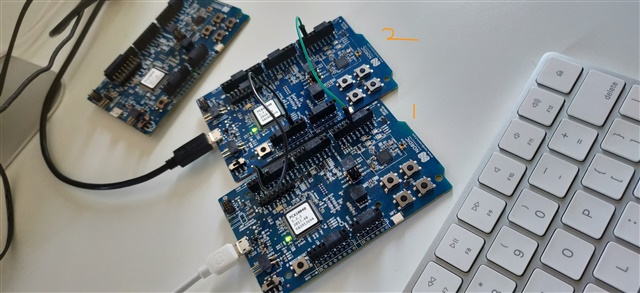Hi,
I am trying to establish UART communication between two nRF52 Dev boards. I flashed both of them with UART peripheral example from 15.2.0 SDK and connected TX,RX and GND pins.
Here, I encountered a weird issue where the two way communication(two terminals are recording the data when I enter data on any one terminal) is taking place with only one connection (TX from one board to RX on another / Connecting RX of both connectors) and nothing is being displayed on terminals when TX on both boards are connected. Can anyone explain this?
Thank you.

